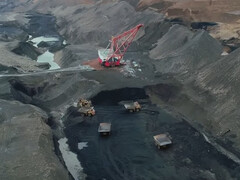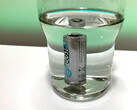We are talking about 180 million tons of red mud every year. This is left over from the extraction of aluminum from bauxite. This mixture currently has to be disposed of at great expense, as it is contaminated with heavy metals. In the worst case, the red mud simply ends up in the environment and poisons the water and landscape.
It is red because its main component (a whopping 60 percent) is iron oxide, better known as rust. Unfortunately, the cost of separating the iron from the sludge is higher than in iron mining. But this may change in the foreseeable future.
Researchers at the Max Planck Institute for Iron Research have developed a method to extract CO2-free iron for steel production. Heavy metals such as chromium can also be extracted and turned into profit. At the same time, this requires technology that is already available in most aluminum smelters.
Electric arc furnaces are used in the metal industry to melt down scrap metal. If a plasma enriched with 10 percent hydrogen is generated, this can convert the iron oxide in the red mud into pure iron. This is known as plasma reduction, i.e. the separation of oxygen from the iron using plasma.
It is worthwhile
Of course, the hydrogen should be produced using renewable energy sources, but obtaining just a portion of the energy from environmentally friendly sources would be enough to improve the CO2 balance compared to conventional iron production.
And according to the study, only 50 percent iron oxide needs to be included for the costs to be lower than with iron mining. Other calculation models even speak of a 35 percent minimum.
Especially as the quantities are quite considerable. There is currently so much red mud from aluminum smelting worldwide that 700 million tons of CO2-free steel could be produced from it. And 60 million tons are added every year.
This means that a third of annual steel production could be made from toxic sludge in one go, which could also save 1.5 billion tons of CO2. No small amount: It is 10 percent of the whole emissions in the US.
Sometimes it's hard to believe what's lying dormant in waste and what it could be worth.












